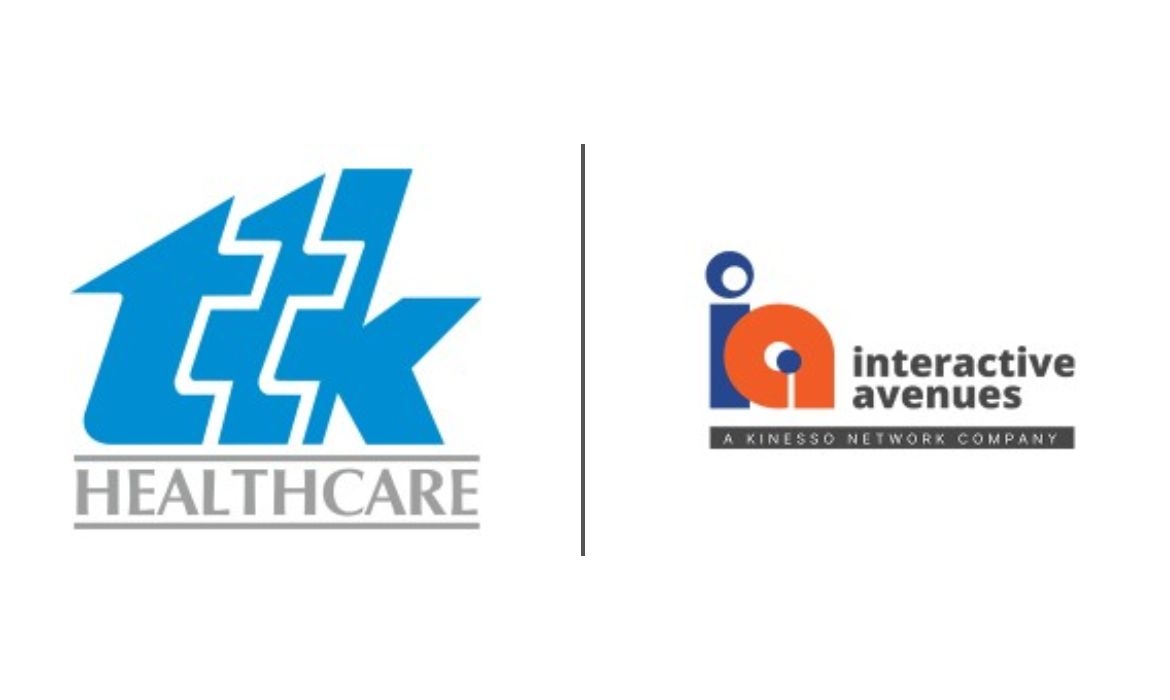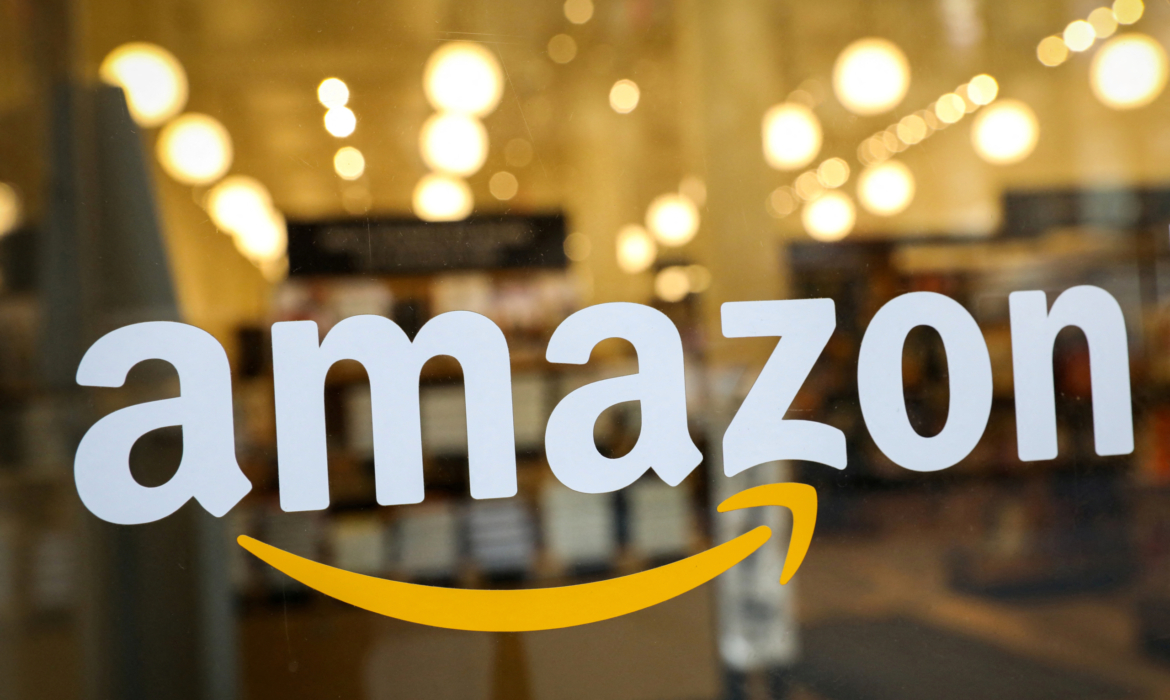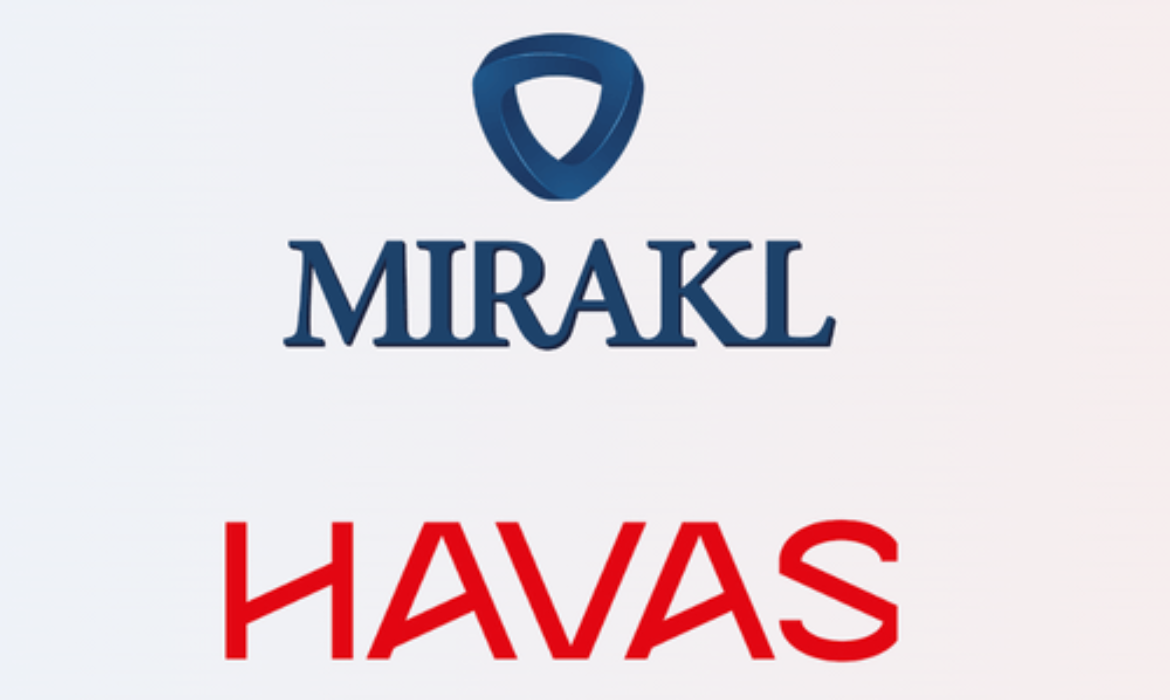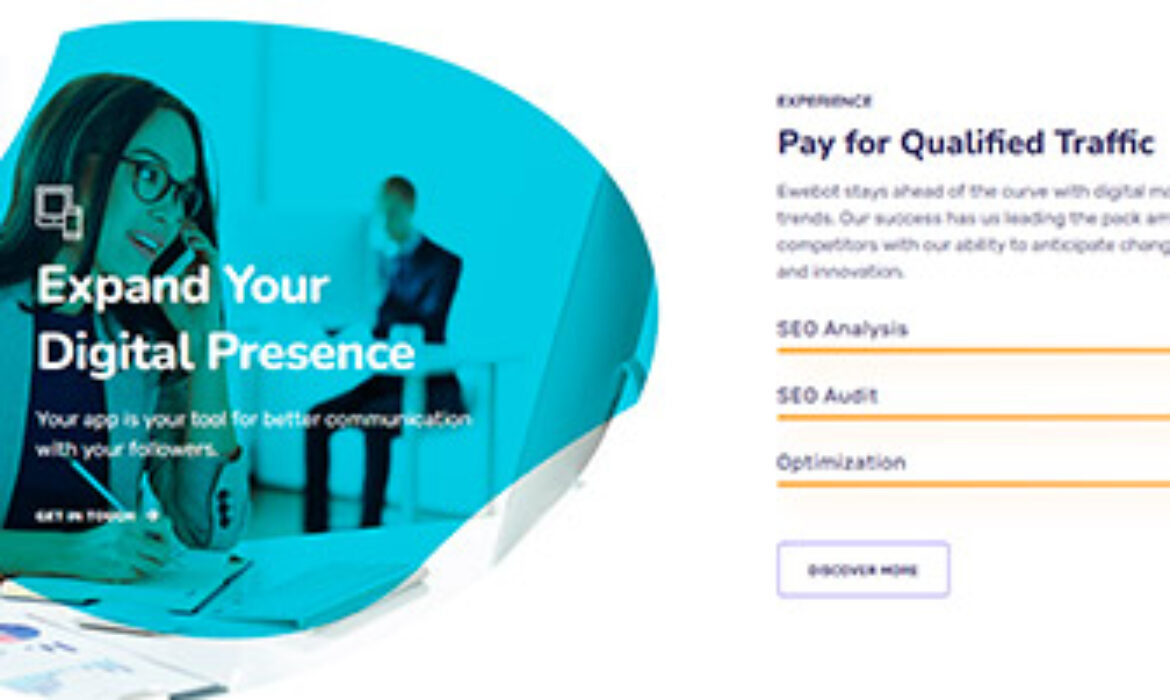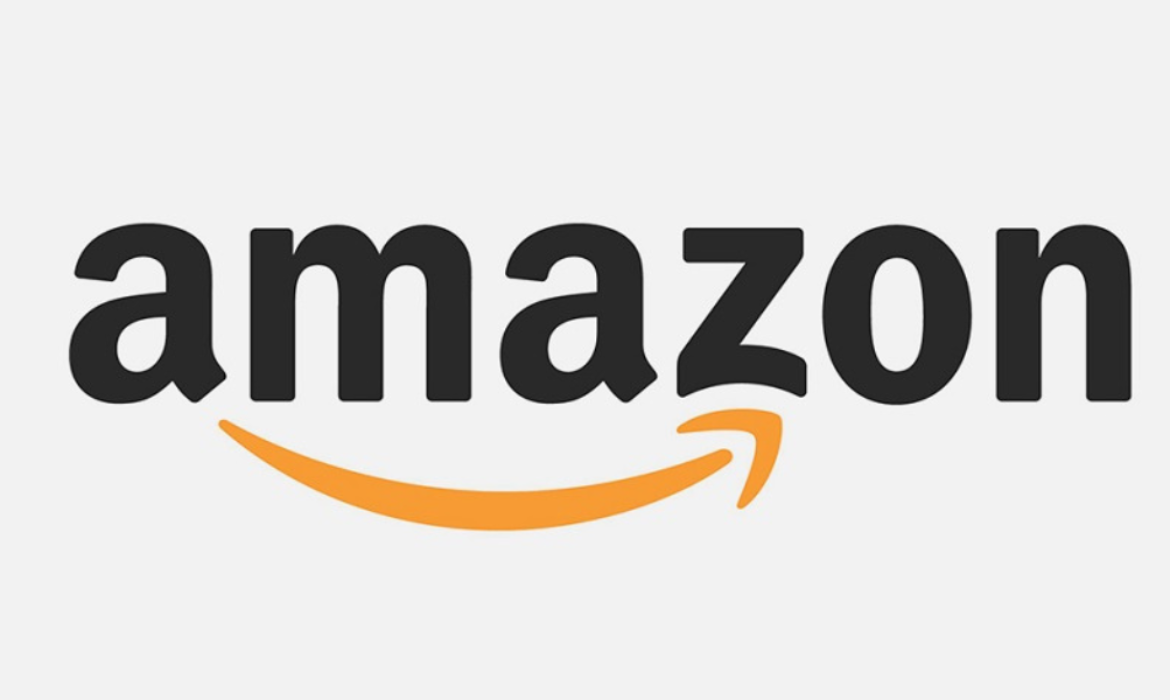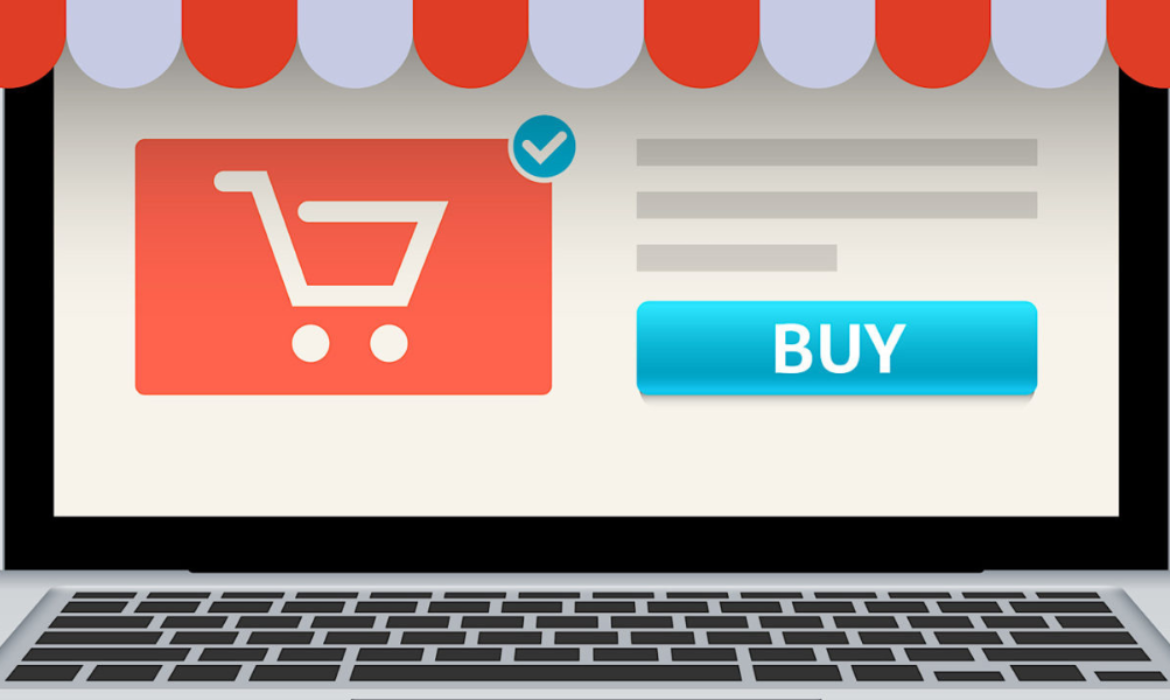Interactive Avenues Secures E-Commerce Mandate for TTK Healthcare
TTK Healthcare, a diversified conglomerate with a wide range of healthcare and FMCG products, has awarded the e-commerce mandate to Interactive Avenues, the digital arm of IPG Mediabrands India. The agency won the account after a multi-agency pitch process and will handle it from their Chennai office.
The e-commerce mandate
TTK Healthcare’s ecommerce presence will be managed by Interactive Avenues, and sales will be increased across key marketplaces and quick commerce platforms. Their responsibilities include e-commerce strategy, content creation, media activation, catalog management, and other duties.
Read More: Madison Loop Wins Oberoi Realty’s Integrated Communications Mandate
Here’s what they said
Arjun Siva, DGM – digital marketing & eCommerce, TTK Healthcare, said,
We are delighted to appoint Interactive Avenues as our eCommerce agency. We’re confident their proven digital expertise will help us drive growth and efficiencies across eCommerce platforms, especially for our brands Skore & MsChief in the sexual pleasure category and Eva, our personal enhancement brand.
Aparna Tadikonda, EVP South, Interactive Avenues, commented,
TTK Healthcare has significantly contributed to the advancement of India’s FMCG & healthcare ecosystem for over 6 decades, and is also a pioneer of the condom industry in India. We are thrilled to be working with them. We will focus on delivering a seamless customer journey and driving digital growth powered by our proprietary data-driven frameworks and tools.
Read More: Wavemaker wins media mandate for $20 million Allianz account
After Meta, E-commerce Giant Amazon Taps Snapchat For In-App Shopping Feature
Amazon announced that it will enable Snapchat users in the U.S. to make direct purchases from the social media platform for select Amazon products. Customers will be able to shop straight from Amazon ads for Snapchat and check out without ever leaving the app thanks to the partnership. The move is part of the e-commerce giant’s strategy to profit from the rising popularity of social media shopping.
Rise of social media influence on e-commerce firms
Some platforms, like TikTok, are launching their own online shopping services as a result of social networks’ growing influence on shopping trends and patterns. Conversely, e-commerce companies can access the subscriber base through other social media platforms such as Snapchat.
Benefits to Snapchat from the e-commerce integration
Snap, which has reported higher-than-expected revenue and user growth over the last three months, would benefit from the deal. Additionally, the data shows that marketers are reverting to using smaller platforms like Snapchat.
Read More: Amazon Announces Publisher Cloud to Plan Programmatic Deals in Amazon DSP
Amazon – Snapchat partnership
On some Amazon products, prospective customers will also be able to view real-time pricing, Prime eligibility, delivery estimates, and product details on Snapchat. It comes after the e-commerce behemoth’s agreement with Meta, which permits users of the online retailer to link their Facebook and Instagram accounts to Amazon and make purchases straight from the social media platforms. Amazon and Pinterest have a similar partnership. The collaboration might facilitate Snap’s advertising business’s comeback.
Here’s what they said
Amazon spokesperson said in a statement,
Customers in the U.S. will see real-time pricing, Prime eligibility, delivery estimates, and product details on select Amazon product ads in Snapchat as part of the new experience. In-app shopping with Amazon is available for select products advertised on Snapchat and sold by Amazon or by independent sellers in Amazon’s store.
Read More: Meta and Amazon Collaborate for In-App Shopping in FB and IG
Havas, Mirakl Collaborate to Enhance Retail and E-commerce Media
Havas Group and SaaS company Mirakl have announced a global agreement in order to boost its retail and e-commerce media. Through platform innovation, Mirakl, a pioneering and top SaaS solution, helps organizations turn into digital enterprises. One of the biggest international communication networks in the world is Havas. Through the cooperation, clients of Havas Group will be able to use Mirakl’s services to market their goods on marketplaces run by Mirakl. Additionally, it presents the SaaS platform as a valuable ally in helping Havas customers establish and expand their marketplace.
Utilizing Mirakl’s distinctive AI-powered advertising technology tailored for marketplaces and e-commerce, the partnership will produce the most potent standalone retail media network for brands and merchants. Additionally, it will make use of the partnerships and clients of both organizations. With this collaborative offering, Mirakl will enable companies and brands to use its software to manage their dropship and third-party marketplace operations.
Building a retail media network
Retail media, according to Mirakl, enables businesses to make money off 97% of website visitors who don’t make purchases. By 2027, it will have opened up a brand-new market with a potential worth of over $160 billion worldwide. Retail media are advertisements displayed on both physical and digital platforms at the point of sale or at the point of preference between two brands. The international cooperation equips Mirakl and Havas clients with the resources they need to capitalize on retail media opportunities and seize this highly lucrative potential. It combines Havas Market, a full-service e-commerce platform, with the prestigious technology suite of solutions from Mirakl.
Retailers will be able to effortlessly monetize their consumers thanks to the new platform, which is brand-neutral. Without exposing their data, it will enable marketers to maximize the money they spend on digital advertising on e-commerce platforms. More than 400 businesses worldwide will have a choice of Mirakl Ads in all formats thanks to the new solution’s direct integration into the Mirakl suite. This will contain sponsored search banners that have been created to give users interesting, improved experiences.
Read More: Havas Invests in Uncommon Studios in A Bold Pledge to Creativity
Customers turn to digital
Through Mirakl Connect, Havas Market-sponsored brands will have direct, seamless access to the 400+ Mirakl markets. The tools and adaptable onboarding solutions created by Mirakl Connect will make it simple for these firms to manage and advance their e-commerce strategy across a number of Mirakl-powered marketplaces. Through a combined offer, Mirakl will be Havas’ preferred partner in assisting with the creation and expansion of marketplaces across its network of clients.
Retailers will be able to monetize their audiences with Mirakl Ads, the ad solution in the Mirakl suite. Furthermore, brands will be able to maximize their digital expenditures on e-commerce websites. The only marketplace-ready ad solution that is specifically designed for e-commerce is Mirakl Ads. With 200+ clients, it combines distinctive AI-powered technology with a strong global network of completely integrated buyers and sellers. It accounts for roughly 1.3 billion monthly visitors.
Here’s what they said
Yannick Bolloré, Chairman and CEO of Havas shared,
With Havas Market we’re committed to taking a holistic, customer-centric view of our clients’ businesses to find the best solutions to create meaningful shopping experiences for consumers and drive incremental revenue for brands across all sales channels. Enabling our clients’ retail transformation requires partnering with the leading providers in the industry, and with Mirakl we’re building a truly synergistic offering that will deliver growth for both our clients and our organizations.
Philippe Corrot, co-CEO & cofounder of Mirakl added,
B2B and B2C companies have no other choice but to further digitize their activities. Platform models such as marketplaces and dropship as well as Retail Media are among the strongest levers to generate new sources of growth and profitability. By joining forces with Havas, we will together accelerate the adoption of the platform models at a global scale for the benefits of Consumers, Operators and Third-party sellers. The strength of the network and the expertise of Havas and Mirakl combined will create a global leader in Retail Media extending the value creation for our common customers.
Read More: Red Havas ME Launches Influencer Marketing Initiative “SWAY”
Omnicom Partners With Walmart, Instacart, First Of Many eCommerce Deals at Cannes Lions
Omnicom plans to announce several e-commerce-related partnerships with major retail players during the Cannes Lions festival. Recently, the agency holding company struck its first strategic agency partnership with Walmart Connect.
Interesting Read: Omnicom Media Group Debuts Video Creative Intel For Advertisers
Cross-screen Planning it is!
Walmart Connect, a closed-loop omnichannel media business offers advertisers an opportunity to reach Walmart shoppers on Walmart’s site and app, across its physical locations, and on the web. The first strategic agreement lets all Omnicom agencies execute cross-screen planning against Walmart audiences in the Omni marketing orchestration platform. Planners can identify the domains, apps, and screens with the most effective reach and cost for Walmart audiences. Using the Omni ID, they can push advertisers’ first-party data to the Walmart DSP where it combines with Walmart audiences.
The retail giant is building a platform to leverage the scale of Walmart’s first-party data and strong customer relationships to help marketers deliver strong ROI in an increasingly fragmented environment. Walmart Executive Vice President and Chief Revenue Officer Seth Dallaire said.
“Our partnership with Omnicom illustrates Walmart Connect’s focus on driving growth, improving product capabilities, and educating the industry on the role retail media platforms have in delivering measurable solutions that connect clients with omnichannel shoppers.”
The access to the WalmartDSP and within Omni will allow optimizing supply paths as well as inventory planning that will increase the investment efficiency for OMG clients. As quoted by Digiday, Megan Pagliuca, Chief Activation Officer, Omnicom Media Group said,
“We can take client first-party data, push it via the Omni ID into the Walmart DSP, then plan the right inventory paths to execute against. Having Walmart be a part of our planning capabilities gives a significant benefit to our CPG advertisers. And that is particularly powerful for the non-endemics because we can both use Walmart data, and then optimize towards other outcomes rather than in-store measurement.”
Another potential benefit of the deal is the ability to connect Walmart’s in-store TV network in its 4,700 stores to Omnicom’s programmatic OOH practice. Dallaire told Digiday,
“Omnicom has been leading the way in terms of that programmatic out-of-home space. So I see that as being a really interesting and fun area for us to collaborate.”
Interesting Read: Clean Rooms Explained: How Marketers Can Prepare For Cookieless World
Data, the oil to the e-Commerce vehicle
Omnicom making its second of a series of deals, at this week’s Cannes Lions Festival of Creativity. The agency holding company announced a strategic partnership with e-commerce player Instacart which involves sharing data and new measurement capabilities that can more directly tie sales to TV advertising.
Instacart is building a roadmap to working within the clean room infrastructure of Omni – Omnicom’s open operating system which orchestrates better outcomes for clients across the entire consumer purchasing journey. The Omni clean room allows access to previously built partnerships with NBCU & Disney for planning and measurement.
Instacart has the full insight of the sales data – right from customers searching through checkout – across different touchpoints. Instacart provides CPG brands with aggregated, anonymized, and retailer-agnostic data insights across the entire Instacart app that allows advertisers to better understand their customers’ online buying habits.
The partnership advances OMG’s goal of providing brand executives with a holistic view of media investments, allowing them to prove the effectiveness and value of advertising. Ryan Mayward, Vice President of Ad Sales at Instacart explained,
“For example, in the future, a home cleaning supply brand can better understand how its ads on Hulu drove purchase of its products on Instacart.
We can also dive deep on basket analysis and content consumption trends with Omnicom to help that brand understand which products resonate most with audiences. Our vision is to equip CPG brands with the data and shopping insights they need to better understand their business and identify growth opportunities.”
Summing up the collaboration on insights and measurement, Officer Megan Pagliuca said,
“Omnicom and Instacart can help brands transform top-of-funnel, brand-building marketing channels to outcomes-based media.”
On the series of e-Commerce moves, Omnicom eCommerce CEO Frank Kochenash concluded that each collaboration offers unique capabilities to connected commerce which will benefit the client investment across all mediums.
Amazon’s Advertising Business Surges by 87% To Nearly $8 Billion
Key Points:
- Amazon’s “Other” category which primarily includes sales of advertising services, as well as sales related to other services offerings, grew a whopping 87% Y-o-Y in the Q 2.
- Amazon CFO Brian Olsavsky noted that the advertising business is a part of the company’s ‘flywheel’.
- He further cited on a media call that new products and functionality for factors like high demand, click through, and high bid rates.
- Amazon’s grabbed a 10% share of the entire U.S advertising market and is anticipated to rise further as trends show that online shopping is here to stay.
Amazon’s advertising business continues to surge, becoming one of the key sources of revenue for the company. The company said its ‘Others’ category generated sales of $7.9 billion, up a whopping 87% from Y-o-Y in the second quarter. The rate in the year-ago quarter was 41%.
The e-commerce giant’s ‘Others’ umbrella is led primarily by advertising as well as includes cloud computing and subscription arms. Amazon recorded total retail sales of $ 113 billion, an increase of 27% Y-o-Y. On the other hand, Amazon Web services and cloud computing products displayed robust growth as the sales grew 37% Y-O-Y.
Advertising is a high-margin business that contributed highly to Amazon’s profits. According to e-Marketer, Amazon’s share of the US digital ad market exceeded 10% last year, strengthening its position as the No. 3 ad publisher.
In its earnings release, Amazon offered some insights into the progress of the advertising side of the business,
“Amazon Advertising launched over 40 new features and self-service capabilities, making it easier for sellers, companies and authors to grow their businesses by helping customers discover their brands and products.
Recent launches include regional sponsored product campaign creation tools; access to educational, technical, and marketing resources via the Partner Network; and a simplified creative asset management solution.”
Furthermore, it said it also expanded the services in Australia, Europe, India, Japan, and Saudi Arabia, creating more opportunities for local and global sellers and brands.
Though the pandemic has affected certain segments of advertising spend, digital advertising has gained immense momentum due to online shopping trends. Amazon has also benefited from it but majorly generate its ad revenues from charging companies to promote their products on Amazon’s online marketplace.
Amazon also drives ad revenues from the online streaming businesses with Fire TV, IMDb Tv, and Twitch. Recently, the IMDb TV streaming service inked a licensing deal with Universal Filmed Entertainment Group. The company also announced it will exclusively stream Thursday Night Football, further boosting Amazon’s streaming ad ambitions. The e-commerce giant noted that it reaches 120 million monthly viewers on Amazon streaming services.
To maintain the momentum, Amazon has also launched bonus programs for merchants and made some of the privacy-related changes affecting the digital ad world.
The Facebook B2C Marketplace Is All Set For Business In The US.
Recently, Facebook took a big leap on its decision of channelizing Facebook Marketplace. Earlier, Facebook planned to target only C2C customers. However, now they are planning to enter the B2C with the United States.
The game plan of Facebook was to provide a C2C marketplace platform to its users. Since, in a short period, the popularity of Facebook marketplace grew, they decided to step up their plan and enter the B2C market as well.
They will provide options of integrated checkouts, payments and shipping. Now, retailers in the US will be able to sell their products on Facebook. Although, the US market will be the first step towards B2C. Soon, Facebook will go global with this idea, since all the arrangements have already been made.
According to Facebook research, every third person on Facebook is using some kind of B2C platform for their daily needs. Therefore, with high-end demand already in place, Facebook just needs to create a supply chain.

Image credit – Facebook.
If you are considering to sign up for the Facebook marketplace; here are good four reasons, why you should do it now!
1. Minimal fee structure
Facebook is set to rule the e-commerce market with minimum commission rates. The rates in the US are set for 5% ($0.40) minimum for a transaction of less than $8.00. This is the least charge across all e-markets. Also, the commission rates are the same for all product categories.
There is no restriction on the number of products in an inventory. Apart from that, there is no additive fee for subscriptions or a different selling plan for people.
However, with the increase in popularity, the commission rate can rise. For example, Amazon recently increased its commission rate on apparels from 15% to 17%. Although, Facebook has shown no such indication of increasing commission rates in future. But, people should stay prepared for the future.
Therefore, before the opportunity disappears, people should gain profit from it.
2. Ease of enrollment
Before enrolling to the Facebook marketplace, there are certain criteria that people need to fulfil. Since the Facebook marketplace is still in its beta testing mode, retailers can enlist themselves using listing partners. Some of these listing partners are Shopify, BigCommerce, WooCommerce, ChannelAdvisor, CedCommerce, Cafe24, Tienda Nube and Feedonomics.
These listing partners have already fulfilled all criteria of the on-boarding process. Being well connected with Facebook staff also gives them an upper hand in providing better services. The on-boarding process is simple. All you need to do is enter details step by step. Start with the details of your business. Then moving on to your tax and shipping details. Further, you have to add your payment accounts and source of your data feed.

Image Credit – Instagram
As soon as all these details are provided and verified your store can go live.

Image Credit – searchengineland.
However, If you are already using Facebook and Google for selling or promoting products, the transaction is even simpler. All you have to specify is the quantity of inventory of your marketplace.
To make sure you don’t oversell, It is important to maintain an inventory.
Facebook is giving much better and faster results as compared to other marketing platforms.
For example, Daily Steals, a company promoted their product(controller for Sony PS4) with the help of Facebook. With the help of Facebook’s Marketplace, they were able to reach almost 6.5 million people. They achieved this goal 5 times faster when compared to other platforms.
They compared the checkout results and found that people were more inclined to complete the checkout process on Facebook. The customers felt more secure in completing the transaction on Facebook, instead of getting redirected to the companies website.
While listing the inventory, make sure that the inventory contains both, parent-child SKU’s.
For running ads, you can use a parent level SKU. However, to sell a product a child level SKU will be required. The sold product will inherit a child-SKU. It will guarantee that the right product is shipped. If you are already selling products on other platforms you will be familiar with the parent-child SKU.
3. All-in-one package.
With the help of Facebook market place, you will be able to sell your product by utilizing the whole Facebook family. Therefore, your product will be marketed on Facebook, Instagram, WhatsApp and even on FB Messenger real soon. The best part about this deal is that the commission rate remains the same(5%).
According to research by Pew Research Centre, these days Facebook active user consists more of an older or middle-aged active audience. On the other hand, Instagram consists of a younger audience.
Therefore, before creating a shop, you must understand your audience. Even, the promotion strategies are different on both the platforms. Instagram is more graphic oriented and provides a much dynamic interface. So if your graphic game is strong you can opt for an Instagram shop.

Image Credit – Instagram

Image Credit – Instagram
On the other hand, Facebook is for more layman usage. To get the best results you need to make sure you stay on the creative side on both the platforms.
4. Easy and personalized way of shopping.
With High end-tech, Facebook algorithm design will help you reach the maximum number of audience. Also, as the user will start interacting with products Facebook will make his experience more personalized based on their data usage. In other words, instead of customers finding the right product, your product will find the right customer.
The product on Facebook can be portrayed in different places. It will be displayed the Newsfeeds, Page shops and in the Marketplace, providing better visibility for the consumer.
A Newsfeed will appear usually between the posts. They will be portrayed as suggested products.
A Marketplace will portray products as per the user likings. With the advanced Facebook algorithm, the probability of two people having the same Marketplace feed is very rare.
A Page Shop will have all your products listed together. It will appear in the same way as displayed in a store. The products will be portrayed from a Page Shop whenever a person searched for the store on the Marketplace.

Image Credit- Facebook
According to a survey made by Succulents Box, a marketing company, a total of 66% increase in their total sales was observed with the usage of Facebook Marketplace. They noticed that with the help of Facebook’s targeting technology there was a tremendous increase in their audience. Also, they calculated an average increase of 19% in their monthly revenue with the help of Facebook’s marketplace.
How to access Facebook marketplace?
Just a few simple clicks! and you can start using Facebook Marketplace. You can easily navigate between your Facebook feeds and the marketplace. Log in to the Facebook, click the Shop tab and get started.
It will direct you to the marketplace. Here, you can link your accounts, set payments methods and set up the business policies of your store. Once done with these steps you will be ready to go!
Also, consumers can shop by clicking on the sponsored image of Instagram Shopping ads and Dynamic Product Ads, and opt for direct checkout. This is a feature provided by the Facebook creative hub and will help to target a greater number of audience. The visual feature will also provide a frictionless experience to the customers.
Facebook’s “Shop” Feature Breaks The Wall Between Social Media And Ecommerce
Facebook has recently launched an option of “Shops” on its social networking platform. This Will allow its 2.6 billion users an opportunity to shop while browsing through their favorite social networking website.
As the demand for the e-commerce market rises, Facebook sees this as an opportunity and is ready to cash more money. Facebook “Shops” will provide room to merchants, SMB, and product companies to build a virtual store on Facebook. Facebook is calling it “Social commerce”.
“We want to give people a place to experience the joy of shopping versus the chore of buying. And we want to help small businesses adapt and make it easier for people to discover and shop for things they love,” Facebook said in a press release.
To make things easy and secure, the products that will appear on Facebook and Instagram as the ad will not be linked to any third-party website or server. Instead, it will be linked to a zippy on the Facebook portal which will take the user to a catalogue from where the user can choose or purchase the product. It will also show the saved card details if the user has ever purchased from Facebook or any of its applications.

Image credit- Facebook.
Live shopping experience:
Facebook will also provide live shopping features on its platform. According to Facebook, People have always been showcasing their products in live videos. Now, they can link these products with their store. The products will appear on the bottom of their live feed. By tapping on the product on their screen users can get all the details of the product. Live shopping feature will be available worldwide to its users!

Image credit – Facebook.

Image Credit – Facebook
“Shops” will be an integral part of the Facebook family. Users can save products in their cart on Facebook, and complete the checkout process on Instagram, or vice-versa. Facebook aims to target small vendors for his aspirations, and nearly 1 million users have registered to be a part of this experiment.
The other principal dissimilarity from past commerce enterprise is that Facebook “required the small businesses to go all-in on our tools,” Zuckerberg said.
The platform is free for everyone and Facebook is partnering with other tech giants to provide services at the back-end.

Image credit – Facebook.
Zuckerberg further stated, “Rather than charge for Shops, we know if it’s valuable they’ll want to bid more for ads.”
One of the key partnership deals is made with “Shopify”, According to Facebook, in just a few clicks you can operate a Facebook shops account from Shopify.
Shopify founder and CEO Tobi Lutke said, “It’s an incredible new reality in the retail space to have these tools natively in the Facebook platform,” he further mentioned, for small businesses it’s very crucial to find new customers.
CEO Tobi Lutke added, “Communications is incredibly important, for so long that’s been monopolized by large CPG brands on television.”
According to him instead of going to different levels of media and advertisement, sellers will be able to reach directly to the customer. “The DTC industry, as some people call it, really happened on top of Facebook and Shopify.”
With Facebook focusing more on small scale businesses adding Shopify having the strength of entrepreneurs, the model looks like a rival of Etsy and doesn’t seem to target retail chains like Target.

Image credit – Facebook.
According to the Zukerberg and Lutke analysis, this model will help to empower small-scale businesses. Helping those sellers who are genuine, and want to provide efficient services to their customers. The model will help small businesses to highlight their product in the market without expensive advertising. As most of the small scale businesses can’t afford the luxury of advertisement.

Image credit -Facebook
The users will also be able to earn rewards for their purchase. Rewards will be known as loyalty points. Facebook will motivate the sellers to provide these points to the customer on their purchase. This will help them to lure more customers. Users will be able to easily keep track of their loyalty points.
Ecommerce Industry Bet High On Performance Marketing In This Pandemic.
Manufacturing units always trusted retailers to sell their products in the market. Retail stores proved themselves worthy of manufacturers’ trust. They met the demands of the market and earned money for the manufacturers. Marketing teams working for verticals like CPG, apparels, and electronics made sure that they portray a brand vision to the topmost funnel of the market. Resellers handled profound funnel and generated permanent customers from window shoppers. They resellers used performance marketing strategies to achieve results.
Coronavirus forced humans to stay inside the houses. Many are depending on e-commerce for our necessities. Even before this outbreak, e-commerce was an effective part of our lifestyle. Manufacturers were well connected with their buyers directly. The marketing tactics focused on performance promotion leaving behind their old methods or brand construction.
We are looking forward to a larger and broader e-commerce culture. Those who invested in planting the seeds of e-commerce platforms are now reaping the fruits of their success due to the rapid growth of e-commerce sales. The people who backed off are now regretting their decisions. It doesn’t matter if your e-commerce is leading the market, evolving, or starting at the bottom of the pyramid, getting connected with the right audience is even easier with the help of the right ad channels. Ad channels prove beneficial in converting the demands of users in sales, developing new ways to enhance the flow of supply by reducing the gap, and bonding a seller and buyer.
Retailers focus on advanced performance marketing channels for marketing.
E-commerce advertising took a big leap, with Amazon and Walmart offering their marketing channels. E-commerce advertisement becomes the third-largest channel of the online market, helping the manufacturers to connect with its customers via advertisement.
The inheritance of data based on customer purchase and auction, search triggered ads are providing wonderful results. They are better and faster-growing options compared to any paid search and social media platform.
By advertising directly to the customers, manufacturers evolved a new strategy called “encouraging the consumer to the edge” where they get compelled to make purchases. It doesn’t matter from where he makes that purchase, ultimately the manufacturer benefits from it directly.
It’s easier than ever to market your product with E-commerce advertising. Amazon and Walmart provide opportunities to manufacturers with limited budgets. They can make an impact on the market with their products and can achieve targeted businesses. Millions of customers are rushing and scrolling through these websites daily. Hence, it doesn’t matter if your product is in the front line or at the centre row you can get a clear view and encouraging sales.
Meanwhile, well-prepared manufacturers expanded their benefits from current crises. Ad channels can help them advertise their products helping them reach the right audiences.
Few tricks and tactics for manufacturers:
As the manufacturers and their marketing teams shift their focus on performance-driven marketing strategies, there are few tricks and tactics which they can apply in their strategy.
Staying focused on the bottom funnel of the market.
Connecting to their customers can help performance marketing teams generate better sales. They should understand customers’ needs and desires. Encouraging them for new purchases and giving them options for purchase coupons, promotions, limited edition notification, fear of missing out (FOMO), and other triggers to get their customer’s attention.
The performance market is a step by step process and an integration of all three platforms ie. social, commerce, and search. Therefore, the customer should be provided with information on every step of his purchase. Moreover its the path of guidance that is needed to be provided to the customer for his purchase with the help of all three channels by the performance marketing teams. This purchase process can be completed in hours, can take days or even months.
Applying a short-term approach to performance marketing.
Marketers have to understand the difference between brand marketing and performance marketing. Brand marketing is a long term goal that tends to achieve the future perspective of the customer. However, Performance marketing is more about today.
Performance marketers must check the feasibility of their brand growth, and aspects that may decrease their sales. They should keep recycling the waste which can cause blockage in the perfect flow of sales.
Performance marketing is all about focusing on customers.
Performance marketers should help their customers in the navigation of the purchasing ladder. They must understand the psyche of the customer and understand the problem faced by their customer. They must come up with effective solutions to help their customers.
With these steps, they will be able to convert a window shopper to a lifetime buyer.
Effects of Covid-19 on the e-commerce market.
Due to the current crisis, several new customers have shifted their focus to e-commerce platforms. They are entering into a new lifestyle and will retain this even after the crisis ends. Due to this fact, several manufacturers are seeing this as an opportunity to move to the e-commerce market. They are also opting for performance advertising themselves a push in the market.
Rejoice Small Retailers: Selling Products is Now Free On Google Shopping
The retail sector has been facing difficult times over the years and it has intensified during the coronavirus pandemic. In the wake of the current challenging situation, Google announced from now the listings of products will be free in the Google Shopping Tab in search results.
Explaining this decision, Bill Ready, President of Commerce at Google cites the fact that it is difficult for struggling businesses to pay for Google shopping listings at this time.
“And as consumers increasingly shop online, they’re searching not just for essentials but also things like toys, apparel, and home goods.
While this presents an opportunity for struggling businesses to reconnect with consumers, many cannot afford to do so at scale.”
Before this announcement, the merchants used to pay Google whenever a customer visited their website through Google product listing but not anymore. Google made this attempt to expand in e-commerce to compete with Amazon Inc as it drives more consumers online due to the COVID-19 outbreak.
Launching Free Listings initiative
Google’s parent company, Alphabet Inc will enable merchants to list on Google Shopping service free of cost. Google witnesses hundreds of millions of shopping searches on its platform every day.
This change will take effect in the U.S search results by the end of April and aim to expand globally by the end of the year. The rollout will begin next week where search results on the Google shopping tab will consist primarily of free product listings.

Image Credit: Search Engine Journal

Image Credit: Search Engine Journal
With physical stores temporary shut doors, digital e-commerce is the lifeline for small and struggling retailers. The company states that many retailers have the items in stock and ready to ship the products that people need but are not easily discoverable online. That is where Google is trying to bridge the gap and is looking to address with this move.
- What’s in it for Retailers?
Free exposure to reach millions of potential customers that visit Google every day for their shopping needs.
- What’s in it for Shoppers?
This will ensure the discovery of more products and more stores via Google’s Shopping Tab. Existing members of Merchant Center and Shopping ads can start directly with their free listing. For new users, Google is trying to streamline the onboarding pretty soon.
A Merchant Center account is compulsory to publish free product listing.
- What’s in it for Advertisers?
Paid campaigns can now be augmented with free listings.
New Partnership with PayPal
Google has kickstarted with new PayPal to allow merchants to link their accounts and speed up the onboarding process.
PayPal joins the existing partners including, Spotify, Woo Commerce, and Big Commerce.
Other Key Changes
Google specifically states that Google Shopping will consist “primarily” of free listings. This means they are still accepting paid listings and will receive notable placement at the top of the Google shopping tab.
The attempt of free listing can affect advertising revenue but this decision is made from a long term perspective as more merchants will start using Google Shopping.
Google free listing will show up in the less popular search tab, compared to the Product ads that will appear on the main page.
Solutions in the time of crisis are not about easy or fast but how to provide relief to struggling businesses and lay groundwork for a better and healthier retail ecosystem.

